Today is Veterans Day in America. This federal holiday commemorates the service of United States armed forces veterans, and was originally celebrated as Armistice Day. The fact it’s celebrated on November 11 is no accident, of course. Armistice for the First World War was reached at the 11th hour, of the 11th day, of the 11th month. Sadly, many of the heroes who fought in World War I have been forgotten. Outside of Alvin York, how many can you quickly name? But Sergeant York wasn’t the only American hero from the Great War. Here are some courageous men you should know about as we recognize Veterans Day.
10. Daniel Daly
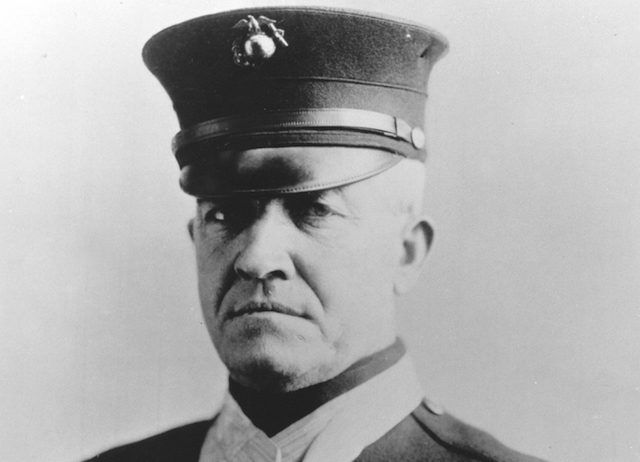
A Sergeant Major in the United States Marine Corps, Daniel Daly leads off our list with one of the most impressive accomplishments in American military history: he’s one of only 19 men to have received the Medal of Honor…twice. Yes, you read that correctly. Daly earned his first Medal of Honor for service in China in 1900 during the Boxer Rebellion. In that instance, he successfully defended his position virtually singlehandedly while inflicting more than 200 casualties. And that was just a warm up act, seeing as he tacked another Medal of Honor onto his resume 15 years later.
That one came for his service in Haiti, when he led a group of only about 40 men against an attack by hundreds of Haitian insurgents in the Battle of Fort Dipitie. He led his men to safety, and was quickly rewarded for his heroism. Obviously, you might be wondering what any of this has to do with World War I. Well, as you can probably imagine from someone like Daly, he wasn’t done yet. During his service in the Great War, he received the Navy Cross for what were described as “repeated deeds of heroism and great service” during the Battle of Belleau Wood. With his impeccable service record, basically the only reason he’s not higher on our list is the fact that he’s not quite as forgotten as some of these other men. After all, chances are you’ve heard his most famous rallying cry, given to his men at Belleau Wood: “For Christ’s sake men-come on! Do you want to live forever?”
Daly, as you can probably guess based on the fact that his balls and probably every other part of him were made from pure steel, survived the war and retired from the USMC in 1929, passing away in 1937. We’re guessing the reason Hitler waited two more years to start World War II was that he was making sure Daly was truly dead, so he wouldn’t have to deal with such a badass.
9. Eugene Bullard
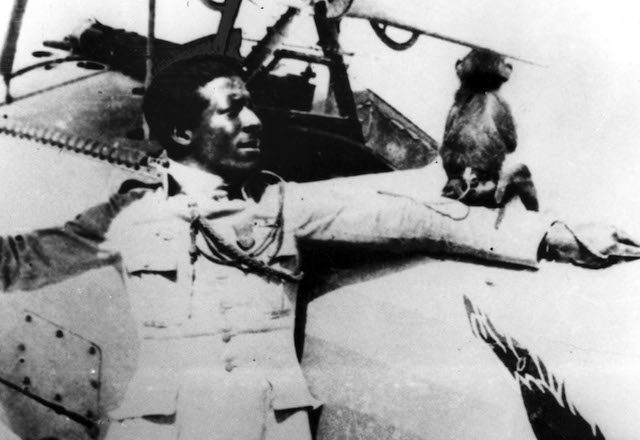
There are a lot of “firsts” when it comes to wars, and to life in general. There had to be a first for everything, right? Well, have you ever wondered who the first black, American combat pilot was? The answer is Eugene Bullard, a Haitian-American from Georgia who flew with France during World War I. His father’s family had fled Haiti during the Haitian Revolution, and eventually Bullard made his way to Europe and settled in Paris, thus beginning his allegiance to France at the outset of the war.
Before becoming a combat pilot, Bullard served as a ground troop and machine gunner in the French Foreign Legion until being wounded during the Battle of Verdun. It was during his recuperation that he joined the French Air Service, flying with the Lafayette Flying Corps and taking part in 20 combat missions as a pilot. Over the course of his service, he received 15 commendations and was made a knight of the Legion of Honor, the highest decoration in France, as well as the Medaille militaire.
You might be vaguely familiar with Bullard if you ever saw the movie Flyboys, which is based on the Lafayette Flying Corps – except for the fact that the movie changed Bullard’s name, ignores his background, and puts James Franco front and center.
8. Frank Luke
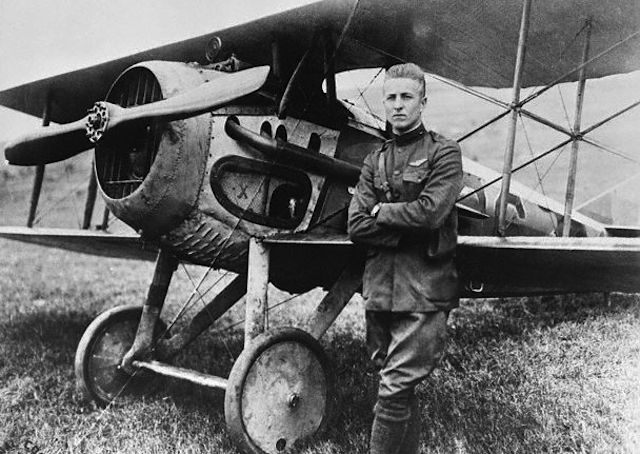
Speaking of flying aces, if there’s any American pilot you’ve heard of from World War I, it’s probably Eddie Rickenbacker. Rickenbacker had more aerial victories than any other American pilot during the Great War. But did you ever wonder who had the second most? No one remembers the silver medalist, right? And that’s why most people have never heard of Frank Luke, who had 18 aerial victories to Rickenbacker’s 26. The Second Lieutenant, sadly, did not make it out of World War I alive. He had been attacking enemy balloons (yes, the hot air kind were actually used during combat in those days) when a machine gunner hit him in his plane. He landed safely but, having been seriously wounded by the bullet, was quickly tracked down and killed by members of the German infantry.
He received a posthumous Medal of Honor for his incredible actions during the Great War, and also received a posthumous promotion to First Lieutenant. And while he may have played second fiddle to Rickenbacker during the war, the famed pilot held Luke in the highest regard, saying of his friendly rival, “He was the most daring aviator and greatest fighter pilot of the entire war.” According to Rickenbacker, Luke “went on a rampage and shot down 14 enemy aircraft, including 10 balloons, in eight days. No other ace, even the dreaded Ricthofen [a.k.a. the Red Baron], had ever come close to that.”
7. George W. Hamilton

It’s kind of amazing that a man so revered in some circles that a book was written with a title literally claiming him to be “America’s Greatest World War I Hero” could be more or less forgotten, but such is the case for George W. Hamilton. The United States Marine Corps Major led the American forces in the Battle of Belleau Wood (the same battle for which Daniel Daly received his Navy Cross, for those keeping track at home), and over the course of his military career received the Distinguished Service Cross and the Croix de Guerre.
His fellow Marines, over the years, have also recognized his tremendous courage and acts of heroism. In addition to his heroics at Belleau Wood, he also served with so much valor that he was recommended for the Medal of Honor on multiple occasions, and was hailed by his peers as the “most outstanding Marine Corps hero of World War I.” Sadly, despite surviving the duration of the war despite participating in virtually every major action, Hamilton was killed in a plane crash at a hypothetical reenactment at Gettysburg – by which we mean, a reenactment of the Battle of Gettysburg, but using the technology of the day, hence the inclusion of the small plane Hamilton was piloting. It was about as unceremonious and unfortunate an end as a hero of Hamilton’s stature could have had, and unfortunately he’s become so forgotten over time that he doesn’t even have a Wikipedia page.
6. Charles Whittlesey

You may have heard of the famous “Lost Battalion” but chances are, you never knew the name of the man who commanded it: Lieutenant Colonel Charles Whittlesey. The Wisconsin native was awarded the Medal of Honor for his acts of courage in the Argonne Forest, in a story that’s pretty unfortunately ignored over the years. Amazingly, it’s a story that’s been most famously represented by a TV movie starring Rick Schroeder as Whittlesey.
The story of what happened there is the stuff of military legend. Whittlesey and his battalion of 554 men pushed forward through the Argonne but were quickly cut off from supply lines and reinforcements, and found themselves surrounded and seemingly at the mercy of the Germans. They had no food or water, and since they had no means of receiving supplies, ammunition was precious. Snipers and German attacks came consistently for a period of four days, but somehow, amazingly, Whittlesey and his men held off wave after wave of the enemy attacks. The Germans eventually sent in a blindfolded American prisoner with a message imploring Whittlesey to surrender, but – and he denied saying it but like we said, it’s the stuff of legend so as always, we feel the need to print the legend – replied with a simple statement of, “You go to hell!”
107 of his men were killed, 190 were wounded, and 63 were missing in action at the end of those four days. Whittlesey was so revered in military circles that he served as a pallbearer for the Unknown Soldier at Arlington Cemetery. Sadly, despite surviving the war, he went missing shortly after boarding a ship from New York to Havana. It’s presumed he committed suicide by jumping overboard, as he’d written several letters to his family members and prepared a will, which he left in his room aboard the ship.
5. Edouard Izac
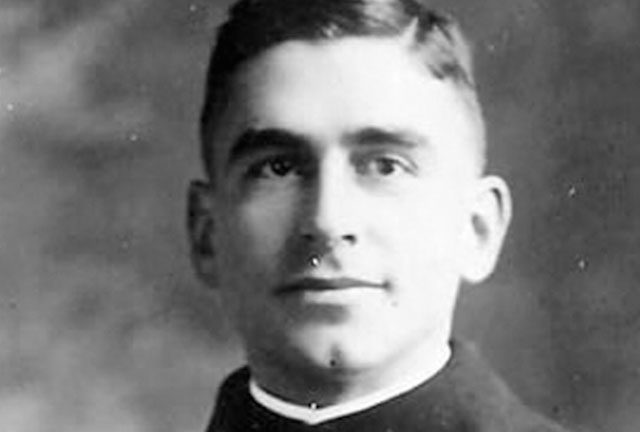
An Iowa native who rose to the rank of Lieutenant Commander of the United States Navy, Edouard Izac served in the troop transport ship USS President Lincoln, and it was his time on this vessel that earned him a Medal of Honor for his brave exploits. Izac was aboard the Lincoln when she was struck by three torpedoes from a German U-Boat, sinking her and allowing Izac to be taken prisoner aboard the U-90. Rather than sitting idly by, Izac used his time as a POW to learn as much as he could about German submarine movements and attempted to escape in order to relay the information to US forces.
His first attempt to escape by jumping from a moving train, but the attempt was unsuccessful due to an injury he sustained in making the leap. However, he did eventually escape from capture and fled to neutral Switzerland. Of course by then, the war was nearly over and his information was no longer of much use to the Navy but his repeated attempts at foiling the Germans earned him his Medal of Honor for basically laughing in the face of death and repeatedly putting his life on the line to help his country win the war. He later became a Congressman and personally selected by Dwight Eisenhower to tour and inspect recently liberated concentration camps at the end of World War II. He died in 1990, having been the last surviving Medal of Honor winner from World War I.
4. William J. Donovan

You may know the name William Donovan, but chances are if you’re familiar with the man, it’s much less about his World War I heroics than it is his being considered the “Father of Central Intelligence.” Donovan was the head of the Office of Strategic Services during World War II – a department which would later morph into the Central Intelligence Agency. It’s as the father of modern American espionage that Donovan is best remembered, despite being one of the most highly decorated American soldiers in the Great War.
Of course, all you need to know about what a badass William Donovan was during the First World War is the fact that his nickname was “Wild Bill.” During his time in the service, he rose to the rank of Major General and earned such awards as the Medal of Honor, Distinguished Service Cross, Distinguished Service Medal, Silver Star, and Purple Heart. He earned his Medal of Honor as a Lieutenant Colonel, as he led his outgunned troops on an assault against a heavily organized and fortified position, consistently rallying his troops and, despite taking a bullet to the leg, refusing to be evacuated until his men were all withdrawn to safety. The man made a big name for himself later in life, but it was his heroics in World War I that should have let people know pretty early on he was bound for great things.
3. Freddie Stowers
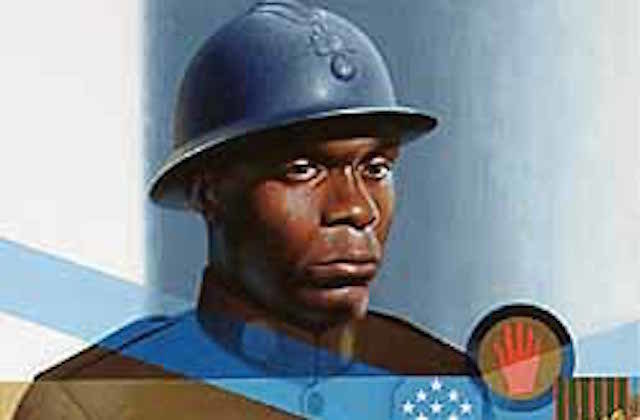
Sometimes, it takes far too long for courageous actions to be recognized. We’ll get to that with the next entry on our list, also, but for now let’s focus on Freddie Stowers. The Corporal in the 371st Infantry wasn’t rewarded for his deeds until 70 years after his death, when he was posthumously awarded the Medal of Honor. A South Carolina native, Stowers was killed in action on September 28, 1918 during an assault on Cote 188. On that day, he and his company were ordered to take the heavily fortified hill, fighting through mortar rounds and a hail of gunfire from the Germans.
The defense of the hill was so vicious that every ranking officer in Stowers’ platoon was killed, leaving the Corporal in command of his rifle squad as they continued the assault on Cote 188. He rallied the remaining troops and pushed forward, but was struck by an enemy machine-gun. That didn’t stop him, of course, and he continued forward, leading his men on. He was struck a second time, but he still kept pushing his men forward, and his act of valor in the face of imminent death inspired them to surge ahead and take out the remaining German defenders and take the hill. Stowers never made it off of that hill, succumbing to the overwhelming blood loss suffered from his multiple bullet wounds.
2. Henry Johnson

One of the greatest American heroes of World War I who never got nearly the recognition he deserved is Henry Johnson, a Sergeant who didn’t receive his Medal of Honor until earlier this very year. Johnson, a North Carolina native who only received his long overdue honor after much campaigning by politicians like New York’s Chuck Schumer, was a member of the all black New York National Guard 369th Infantry – better known as the Harlem Hellfighters. His outrageously heroic deeds, needless to say, should have been recognized much, much sooner.
So what exactly did he do that was so great, you ask? Well, how about singlehandedly fighting off a German raiding party while sustaining a staggering 21 wounds and simultaneously preventing the other man on sentry duty with him that night from being captured? Oh, and there’s also the fact that his ability to fight off the Germans using grenades, his fists, and a bolo knife (as well as the butt of his rifle) kept numerous other soldiers alive. It’s speculated that there were as many as 24 Germans in the raiding party, yet somehow, Johnson managed to fend them all off, earning the nickname “Black Death” which, while a little racist in retrospect, is still a pretty badass moniker.
1. Frank Gaffney

It’s kind of amazing that a man pretty universally praised as the “second bravest man in the US Military” has become largely forgotten through the years. Unfortunately, unlike guys like Alvin York, he never had a movie made about his courageous, inspirational feats starring Gary Cooper. Nicknamed “The Human Hurricane,” which would have made for a sensational wrestling moniker, Private First Class Frank Gaffney earned the Medal of Honor for, frankly, was basically the same sort of action that earned Sgt. York so much fame in the long run.
Serving as a lowly PFC and rifleman for the 108th Infantry, Gaffney saw his brothers in arms gunned down by the Germans. He was literally the last man standing in his unit, but he pushed forward and singlehandedly took out a German machine-gun post, killing the crew and taking the machine-gun position, which he held against the enemy until relief arrived. He killed four more Germans and bombed several dugouts, and his actions led to the capture of 80 German soldiers. Like we said – pretty much exactly the same thing that Alvin York gained so much fame for, yet Gaffney’s heroics have basically been swept over through time. Gaffney survived the war and passed away in 1948 at the age of 64, and was buried in his hometown of Buffalo, New York. He hadn’t survived the war completely unscathed, though, losing his left arm in battle.
Maybe it’s just us, but he certainly sounds like a man who deserves more than just the few sentences devoted to him on Wikipedia.